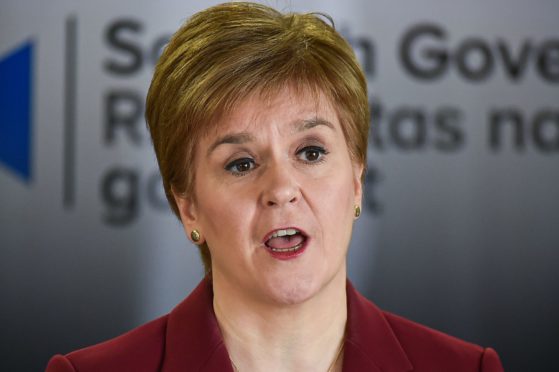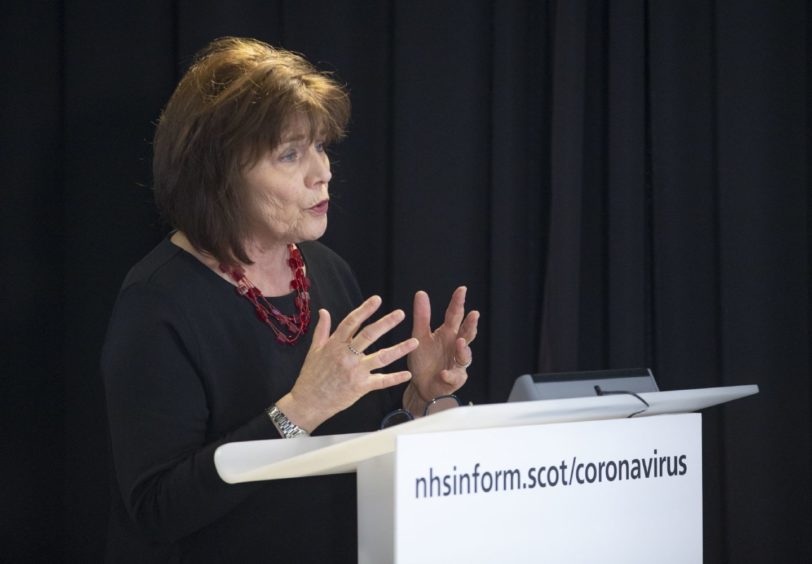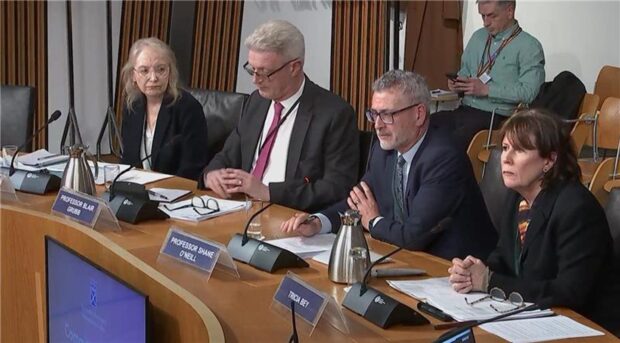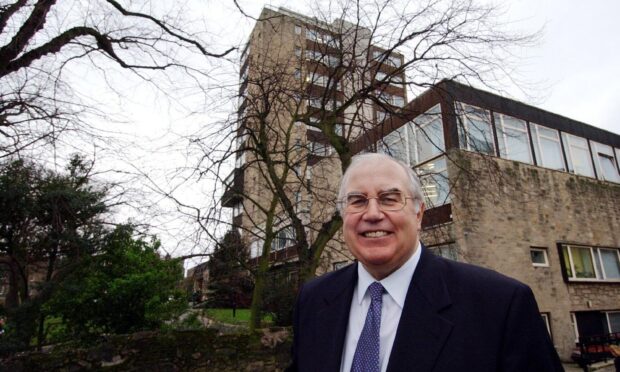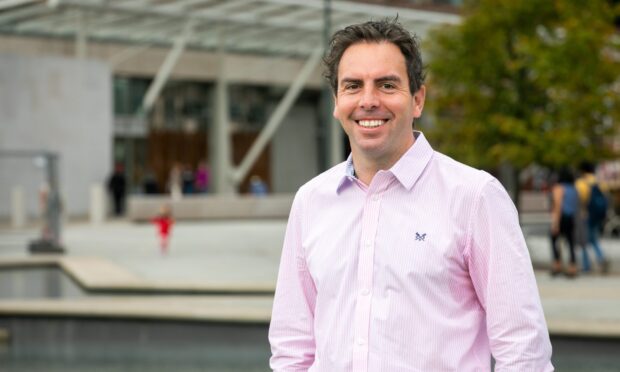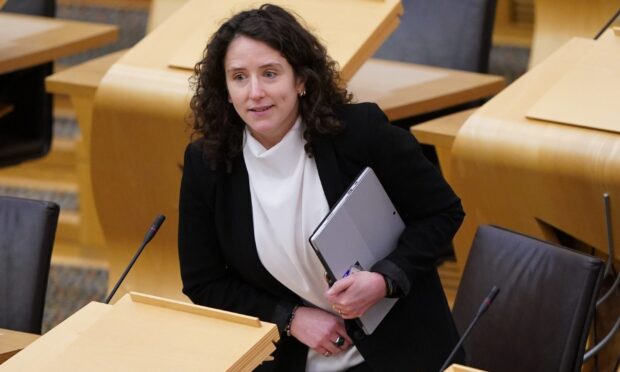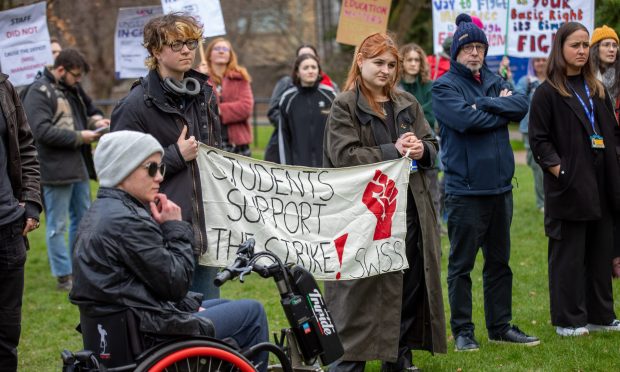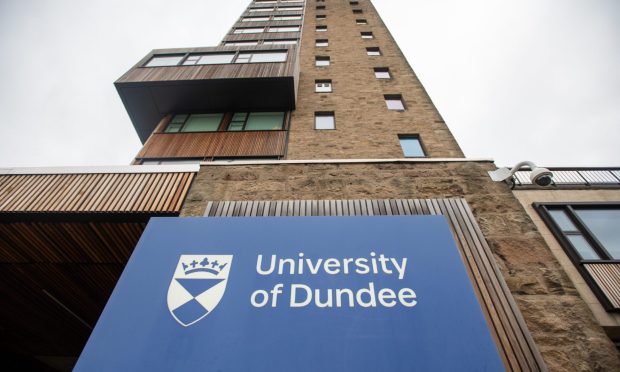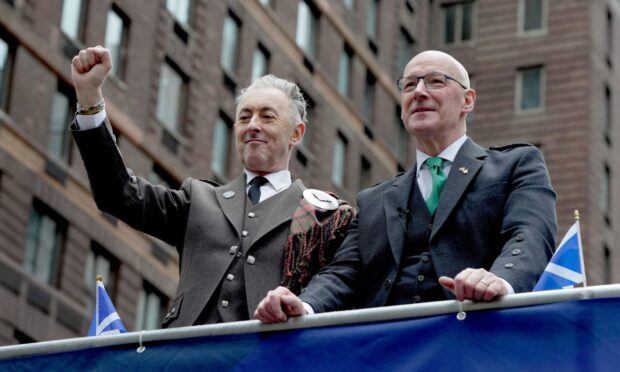Nicola Sturgeon has accepted assurances PPE firms are not overlooking Scotland as she conceded supplies at the centre of a cross-border row were from the English national stockpile.
The first minister and Health Secretary Jeane Freeman signalled they accepted that PPE gathered by the English health authorities should be distributed south of the border.
As a result of health being devolved to Holyrood, Scotland has its own PPE stockpile which is being used to top-up Scottish care homes who are struggling to receive enough protective gear from their usual sources.
A row over PPE supplies erupted earlier in the week when Donald Macaskill, Scottish Care CEO, claimed UK suppliers were prioritising England over Scotland.
Dr Macaskill, whose organisation represents private care homes, said his members reported there had been a “massive dry up” of PPE supplies into Scotland as a result of the issue.
The controversy was ramped up when Ms Sturgeon waded into the row and said it would be “unconscionable and unacceptable” for PPE to be diverted from one part of the UK to another.
Ms Freeman raised the issue with UK Health Secretary Matt Hancock during a conference call in which he reassured her that the UK Government had not ordered the diversion of PPE from Scotland.
Boris Johnson’s Government has always maintained that the different countries in the UK have been working very closely together to ensure a fair distribution of the essential kit.
But doubts about the UK Government’s assurances arose when Scottish ministers were alerted to the website of Gompels HealthCare, a Wiltshire-based PPE distributor.
The website said some of its PPE products had “restrictions” on who could purchase them and apologised to Scottish and Welsh customer. The website added the restrictions were a “criteria given to us by Public Health England”.
Later the firm’s managing director Sam Gompels explained that the restrictions were because the PPE in question had been sourced from Public Health England’s own stockpile which had been collected in case of a flu pandemic.
At her daily coronavirus briefing on Wednesday, Ms Sturgeon seemed to accept this was the case. Previously, she said, Scottish ministers had been acting on the assumption that the PPE was “over and above” national stockpiles.
“It appears to be about distribution of the English national stockpile,” Ms Sturgeon said. “We are still working to get to the bottom of this and make sure that any concerns are addressed.”
Just before hosting her daily conference call from journalists from St Andrews House, Edinburgh, Ms Sturgeon was asked about the issue when she appeared on ITV’s Good Morning Britain.
The first minister said she was “willing to accept” the UK Government’s assurances, but added that supplies needed to be fair across the UK.
At the coronavirus briefing, Ms Freeman said: “The concerns that were raised by Scottish Care was that orders that were due by their members to be delivered in Scotland had been diverted elsewhere.
“…What now appears to be the case is, certainly from Gompels is that what they had been asked to do by Public Health England – or the NHS in England – it is not quite clear – is to distribute their own pandemic stock. That is a different situation.
“We have our own pandemic stock here in Scotland, our national procurement organisation NSS holds that, it distributes that.
“We are still trying to be absolutely sure we have got to the bottom of this. That we can provide reassurance to the members of Scottish Care that their normal PPE providers and suppliers will continue to take their orders and to supply them and that as we have arranged, we will provide top-up PPE to those individual care homes given that they have a greater demand of PPE than would be the case in normal circumstances.”
Banff and Buchan Tory MP David Duguid said: “I’m glad that the Scottish Government has acknowledged that the UK Government has not instructed any company to prioritise PPE for any one nation.
“I think people across Scotland want to see our governments working together to make sure those on the frontline have access to the resources they need.
“Scoring political points should be the last thing on anyone’s mind in the middle of a pandemic.”
Anatomy of a cross-border coronavirus row
Since Covid-19 struck, there has been a deliberate effort on the part of the Scottish and UK Governments to strike an united front. For a spell, at least, the constitutional spats that characterise the relationship between Nicola Sturgeon’s SNP and Boris Johnson’s Tories were set aside for the greater good.
But the suggestion that Scottish care homes were missing out on PPE because suppliers had been told by the UK Government or one of its agencies to priorities English establishments threatened to destabilise that uneasy truce.
As controversy raged on social the camps split down traditional constitutional lines. The wilder independence supporters claimed Scotland was the victim of a UK conspiracy. While hardline pro-Union voices claimed it was a fuss about nothing. The truth, as ever, was somewhere in the middle.
What sparked the controversy?
Donald Macaskill, the CEO of Scottish Care, told Radio Scotland that his members were reporting that leading PPE firms were prioritising English care homes. He said the Scottish Government was helping bridge the gap in supplies, but warned there had been a “massive dry-up” of PPE into Scotland.
“We are facing an additional problem and that is that the care home sector and the home care sector have traditionally ordered PPE from various sources. The four largest companies in the UK last week said they were not sending to Scotland and their priority was going to be England NHS and the English social care providers.”
Donald MacAskill, Scottish Care
Nicola Sturgeon promised to look into it.
How did the two governments react?
One of the first acts by the Scottish Government was for its national clinical director Professor Jason Leitch to dismiss the claims as “rubbish” first thing on Tuesday.
But within a couple of hours, it was clear Ms Sturgeon was taking them more seriously.
At Wednesday’s coronavirus briefing Nicola Sturgeon said it would be “unconscionable and unacceptable” if English care homes were being prioritised. She also upped the ante by promising to investigate the claims.
UK Health Secretary Matt Hancock abandoned an attempt to cancel his regular conference call with Scottish Health Secretary Jeane Freeman as it became clear the row was not going away.
During his call, Mr Hancock assured Ms Freeman that PPE supplies were not being diverted from Scotland. Similarly, at the UK Government daily coronavirus briefing the Chancellor Rishi Sunak poured cold water on the claims.
Despite this there was an entry on the website of the PPE distributors Gompels HealthCare that was giving the Scottish Government cause for concern.
What evidence was there that Scotland was at a disadvantage?
The Gompels website seemed to back up claims that Scotland was being overlooked. The website said some PPE products had a “restrictions” on who could purchase them and were limited to those registered and operating within England. The website apologised to Scottish and Welsh customers, adding the restrictions were a “criteria given to us by Public Health England”.
On Wednesday evening, BBC Reporting Scotland produced documents from other PPE firms suggesting they were bound by strict UK Government guidelines to send their equipment to England only.
This was on Reporting Scotland tonight. https://t.co/FcQsbznGzP
— Robert Macintyre (@RobertTyreBute) April 14, 2020
What was the explanation?
When contacted Sam Gompels, the MD of Gompels HealthCare, explained that kit distributed by his firm was earmarked for English care homes because it had been stockpiled by Public Heath England, a UK Government agency that only operates south of the border.
Mr Gompels said the PPE in question had been stockpiled by Public Health England for use in a flu pandemic. It had since been retested to make sure it worked against coronavirus.
He said the company still wanted to supply Scottish care homes, but there were huge shortages of equipment from other sources.
The company’s was reflected in updated information put on the company website, which said flu stocks were “mandated for supply” in England.
Gompels have updated website to say it's "delighted to assist Scottish and Welsh devolved administrations with PPE", but also says: "English pandemic flue stocks are mandated for supply for CQC registered settings operating in England.https://t.co/EtuVkeofIR
— Tom Peterkin (@TomPeterkin) April 15, 2020
The Gompels website included a link to a UK Government document confirming that the company was one of seven PPE specialists supplying care providers with the Care Quality Commission, an England-only body.
How did the Scottish Government react to this?
Nicola Sturgeon and Jeane Freeman both acknowledged that the PPE at the centre of the row had originated from the English stockpile. There seemed to be a tacit admission that given that Scotland has its own stockpile, it follows that Public Health England PPE should go to English care homes.
The hope for care homes must be that this distracting row has now blown over and that politicians get on with dealing with their legitimate and extremely serious concerns about shortages of PPE equipment for staff.
